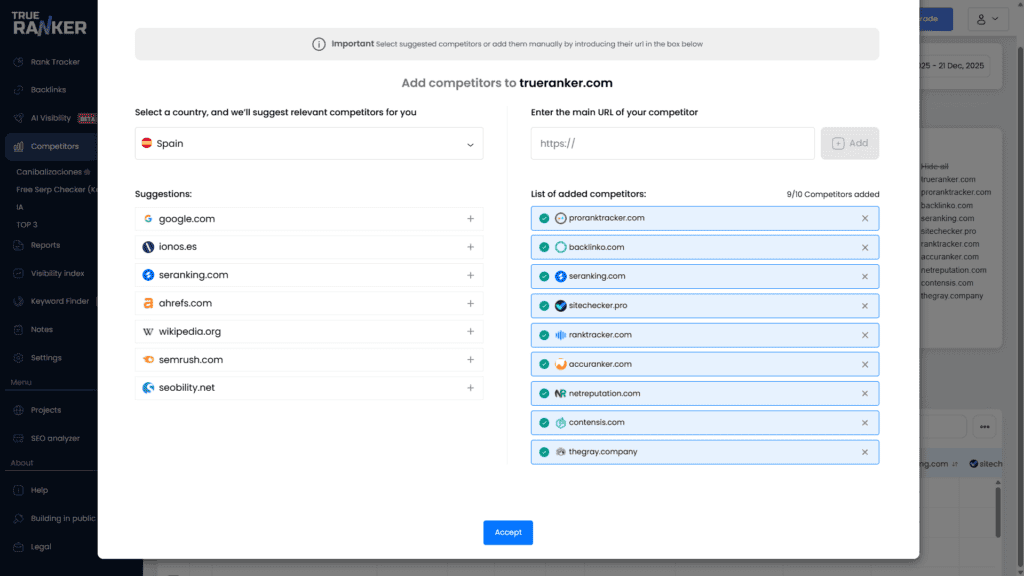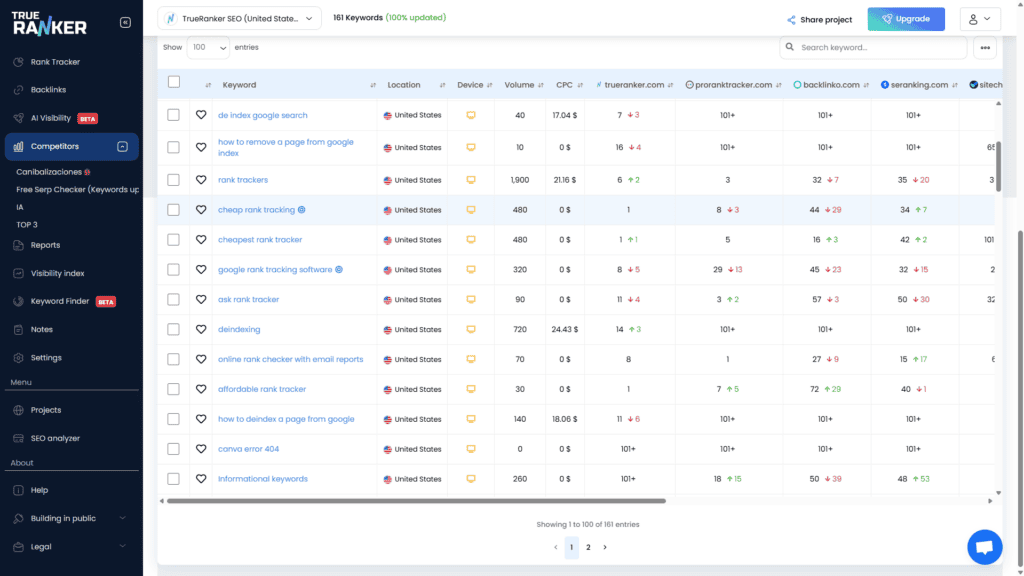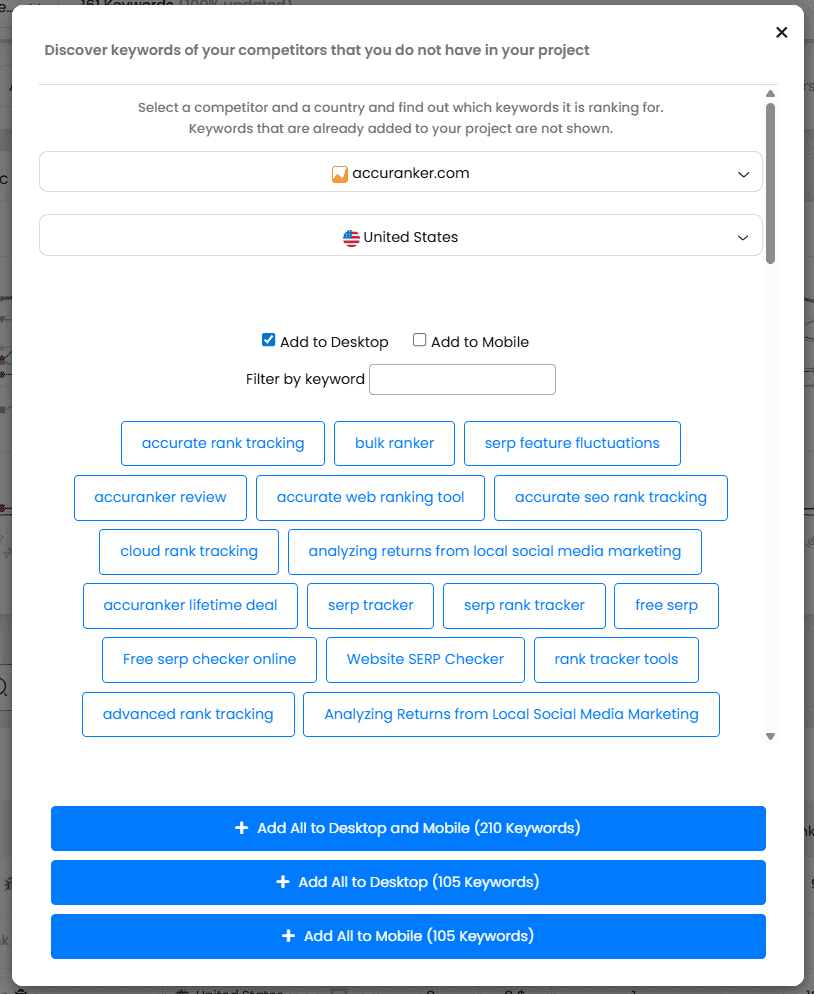Do you know that your competitors are getting traffic for keywords you don’t even know exist? And worse: they are stealing customers who were ready to buy from you.
Many believe that competitor analysis requires being an expert detective or spending hours in Excel. False. The only thing you need is to know where to look.
In this guide, I won’t bore you with abstract theory. I’m going to teach you how to “steal” your rivals’ strategy in less than 5 minutes using TrueRanker. Let’s detect their best keywords, see where they fail, and how you can outrank them.
Contents
ToggleWhy Competitor Analysis Is Your SEO Gold Mine
SEO isn’t about reinventing the wheel; it’s about making it roll better than the guy next to you. Analyzing your competition’s keywords allows you to:
- Find “Low Hanging Fruits”: Keywords they use and you don’t, which are easy to rank for.
- Save Budget: Don’t waste money testing Google Ads keywords; use the ones you already know work for them.
- Understand their Strategy: Are they betting on blog content? Product pages? Keyword analysis reveals it all.
The Fast Method: How to Detect Rivals with TrueRanker
Here is where the magic happens. TrueRanker has a specific feature called “Competitors” that automates the espionage. Forget about searching Google one by one.
Step 1: Add Your Usual Suspects
First, tell the tool who you think your rivals are. If you don’t know, simply search for your main keyword in Google and see who comes up first.

Inside your TrueRanker project:
- Go to the Competitors tab.
- Click on “Add competitor”.
- Enter their website URL.
Instantly, the tool will start crossing your data with theirs.
Step 2: The Truth Table (Comparison)
Once added, you’ll see a direct comparison table. This is where you see the reality: Who ranks better for each keyword?

Look at the columns:
- Your Position: Where you are now.
- Their Position: Where they are.
- Volume & CPC: To know if the keyword is worth fighting for.
🚀 Pro Tip: Look for rows where your competitor is on Page 1 (Top 10) and you are on Page 2 or worse. Those are your immediate opportunities for improvement.
How to Discover Keywords They Have (And You Don’t)
Sometimes the problem isn’t that you rank worse, it’s that you aren’t even attacking the same words as them.
Use the Keyword Discovery feature to analyze their domain and see why they appear in Google while you don’t even have those terms in your project.

Once you have the list, ask yourself these three questions before copying them:
- Is it transactional? (Does the person searching want to buy or just get info?).
- Do I have content for this? If you don’t have a page covering this topic, you’ll have to create it. I recommend our guide on how to create Content Clusters to attack these topics with force.
- Is it realistic? If your competitor is Amazon, maybe you can’t win for “buy sneakers”, but you can win for more specific terms (Long Tail).
Monitor the “Race” in Real-Time
SEO isn’t a static photo; it’s a movie. Once you’ve detected competitor keywords and optimized your content (or created new pages), you need to watch.
Configure daily tracking in TrueRanker. You’ll receive alerts if:
- Your competitor overtakes you on a keyword.
- You surpass your competitor (celebration time!).
- A new competitor appears in the SERPs that you didn’t have on your radar.
Bonus: Don’t Forget Authority (Backlinks)
Knowing the keywords is half the battle. The other half is knowing who links to your competitors.
TrueRanker also has a specific module to analyze competitor backlinks. If you see they rank better than you—even though you have better content—it’s probably because they have better links. Keep an eye on that section in your project to complete your spy strategy.
Ready to outperform your competition?
Stop guessing and start making decisions based on real data. Try TrueRanker today and discover everything your rivals don’t want you to know.
Start your FREE Trial →
No credit card required to get started.

